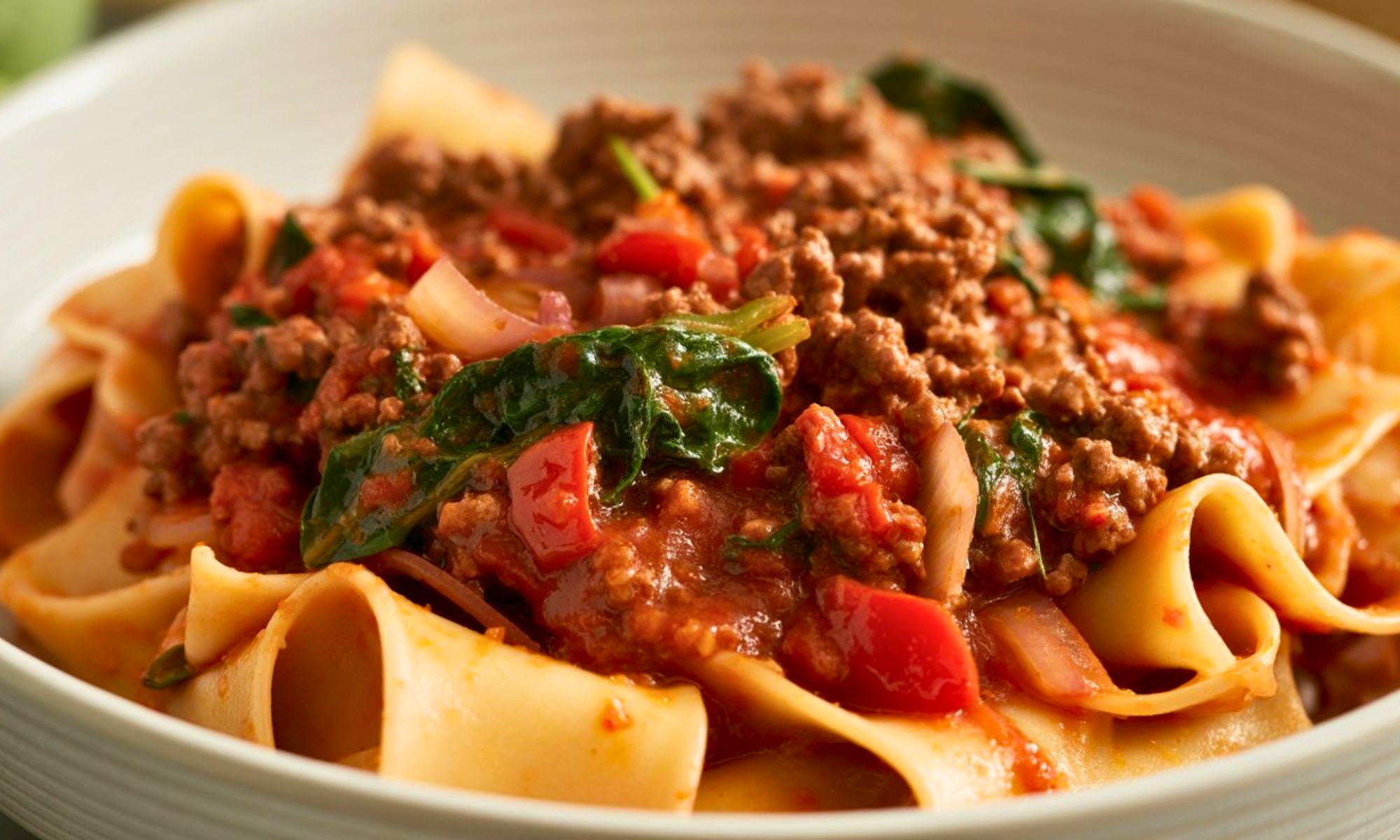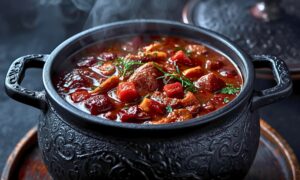Forget everything you think you know about pasta night. The real secret to Ultimate Italian Noodles isn’t hiding in some dusty cookbook or fancy culinary school, it’s living in the steam rising from your grandmother’s kitchen, where technique trumps trends and soul beats sophistication every single time.
Most home cooks massacre Italian noodles without realizing it. They dump pasta into under salted water, drown it in jarred sauce, and wonder why their dinner tastes like cafeteria food. But when you understand the three sacred rules of authentic Italian noodles, perfect pasta water, proper sauce marriage, and that magical splash of starchy liquid gold, you transform simple ingredients into pure poetry.
These Ultimate Italian Noodles aren’t just another weeknight meal. They’re your gateway to understanding why Italians have perfected the art of making magic from simplicity. Master this technique, and you’ll never look at pasta the same way again.
The Sacred Art of Authentic Pasta Mastery
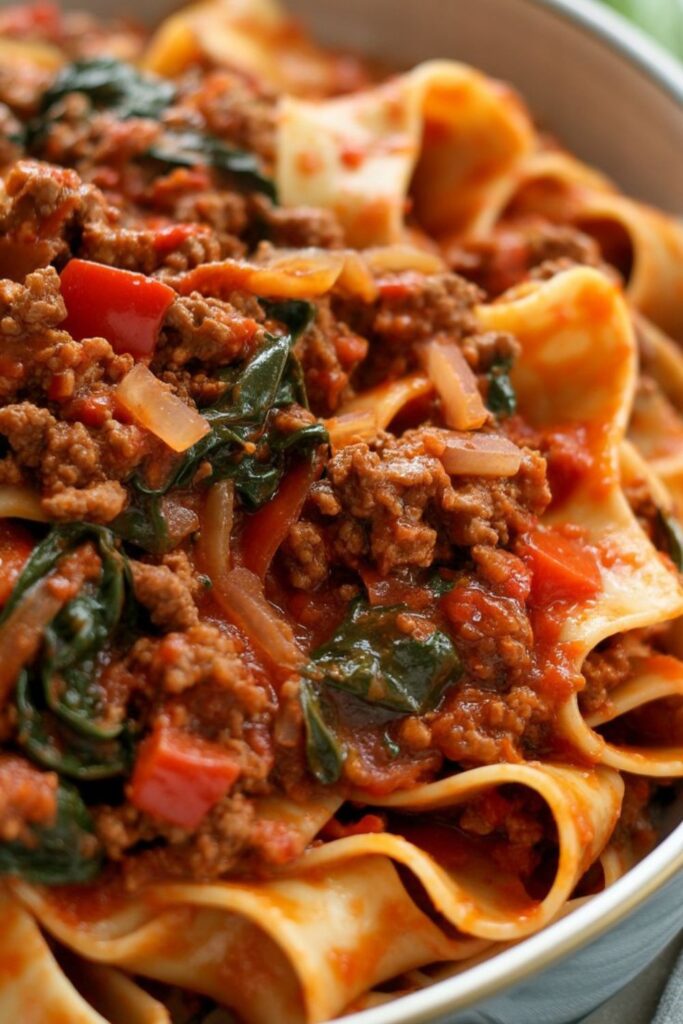
Authentic Italian noodles follow one unbreakable commandment: respect every single ingredient. No shortcuts that compromise integrity, no substitutions that mask natural flavors, and absolutely no sauce that drowns the pasta’s inherent beauty.
My nonna taught me that crafting traditional spaghetti resembles conducting a symphony. Each element must harmonize perfectly with others. Too many ingredients create chaotic noise instead of beautiful music.
The transformation happens when you stop following recipes blindly. Start understanding why each step matters for exceptional Italian noodles. That’s when good becomes absolutely unforgettable.
Essential Italian Noodles Ingredients for Perfect Results
Core Components for Authentic Italian Noodles
For the pasta foundation:
- 1 pound premium dried pasta (spaghetti, linguine, bucatini)
- Coarse sea salt for properly seasoned cooking water
- 2 tablespoons finest extra virgin olive oil available
For traditional Italian noodles sauce base:
- 6 fresh garlic cloves, sliced paper thin for sweetness
- 1/3 cup premium extra virgin olive oil
- 1/2 teaspoon red pepper flakes (adjust heat preference)
- 1 cup dry white wine (drink worthy quality only)
- 2 pounds ripe tomatoes, hand crushed for authentic texture
- 1 teaspoon sea salt, plus extra for seasoning
- Freshly cracked black pepper to taste throughout
For restaurant quality Italian noodles finishing touches:
- 1 cup freshly grated Parmigiano Reggiano cheese
- 1/2 cup fresh Italian parsley, roughly chopped
- 3 tablespoons cold butter (the secret weapon)
Smart Ingredient Swaps for Better Pasta Dishes
Can’t find San Marzano tomatoes for your Italian noodles? Quality canned whole tomatoes work beautifully when hand crushed properly. Choose brands listing only tomatoes and salt, no additives muddying clean flavors.
Living where real Parmigiano Reggiano costs a small fortune? Pecorino Romano delivers sharp, salty perfection for authentic spaghetti dishes. Its sheep’s milk origin provides intense flavor that enhances character. Grana Padano offers excellent alternative with similar aging.
Fresh herbs unavailable for your pasta tonight? Dried parsley works using one third the amount specified. Add during final cooking minute to bloom concentrated flavors. Combine dried parsley with fresh basil for depth.
Lactose intolerant friends can still enjoy these traditional noodles completely. Nutritional yeast provides umami depth without dairy complications. Its naturally cheesy flavor complements tomatoes beautifully in durum wheat pasta. Start with half portions and adjust.
Budget conscious cooks shouldn’t skip making exceptional Italian noodles. Regular olive oil works for cooking stages perfectly. Save extra virgin for finishing drizzles. Even standard pasta creates amazing results with proper technique.
Mastering the Complete Italian Noodles Technique
Water Preparation for Perfect Pasta
Fill your largest pot with water and salt generously. It should taste like mild seawater, saltier than you think necessary for exceptional Italian noodles. This step builds the flavor foundation completely.
Bring water to vigorous rolling boil over high heat. While waiting, prep all sauce ingredients thoroughly. Slice garlic paper thin, thick pieces burn before releasing sweetness.
Building Your Traditional Sauce Foundation
Heat olive oil in large skillet over medium heat. When it shimmers without smoking, add sliced garlic carefully. Let it sizzle gently, turning golden and fragrant within 2-3 minutes.
Add red pepper flakes immediately for proper blooming. They release heat evenly throughout your pasta sauce. This creates essential flavor layering that professionals understand.
Wine Integration for Exceptional Pasta
Pour white wine and let it bubble enthusiastically exactly 2 minutes. You’re cooking off harsh alcohol while preserving bright notes that balance rich tomatoes in traditional spaghetti perfectly.
Add hand crushed tomatoes, salt, and pepper to mixture. Lower heat to gentle simmer while pasta cooks. Sauce reduces and concentrates, developing deeper flavors for outstanding Italian noodles.
Perfect Pasta Timing Secrets
Drop pasta into that boiling, properly salted water immediately. Cook exactly 2 minutes less than package directions. It finishes cooking in sauce, absorbing flavors while maintaining perfect texture.
Here’s a professional secret most miss: stir durum wheat pasta only during first cooking minute to prevent sticking. After that, let rolling boil do the work. Constant stirring breaks delicate strands.
Test doneness by fishing out single strand carefully. Bite into it, you should feel slight resistance at center. This “al dente” texture ensures Italian noodles won’t turn mushy.
Reserve one full cup of starchy cooking water before draining. This liquid gold binds sauce and pasta for restaurant quality Italian noodles every time.
The Science Behind Ultimate Italian Noodles
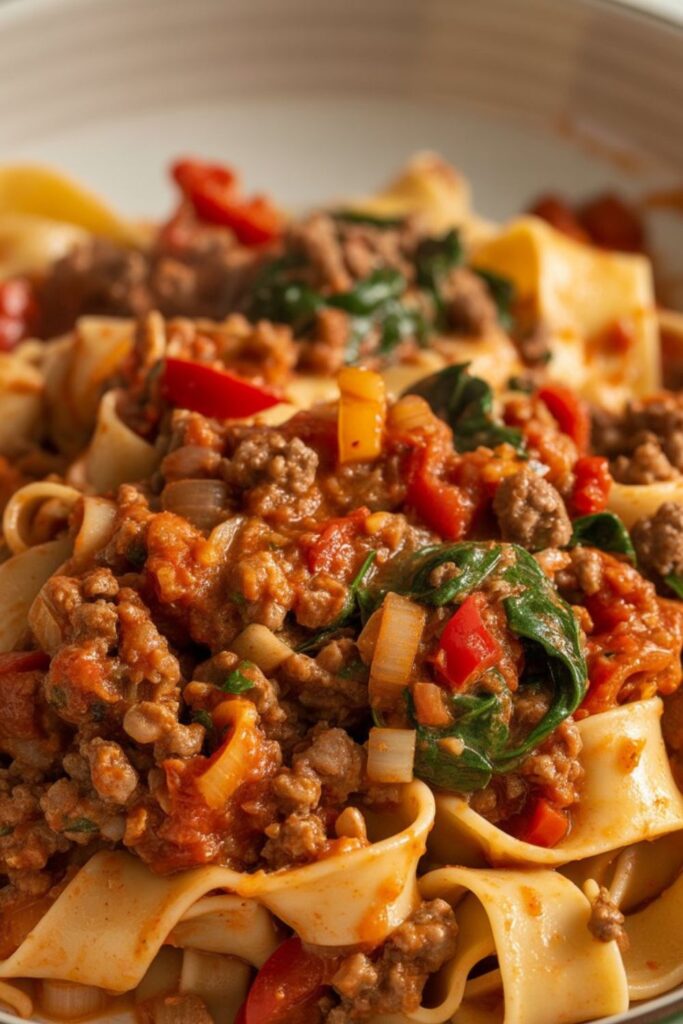
Why Cold Butter Transforms Pasta Completely
Whisking cold butter into hot sauce creates perfect emulsion. Fat molecules bind with water for glossy, silky texture. This “mantecatura” technique elevates good spaghetti to restaurant perfection.
Butter adds richness without heaviness, balancing tomato acidity naturally. It’s the difference between amateur pasta and professional Italian noodles that impress consistently.
Pasta Water Magic for Success
Starchy cooking water isn’t just anti stick insurance for traditional noodles. It’s your flavor bridge between pasta and sauce. Starches bind everything while salt seasons from within completely.
Professional chefs save almost any sauce with pasta water. Too thick? Add a splash carefully. Too thin? Starches help it reduce for perfect Italian noodles consistency.
Assembling Restaurant Quality Italian Noodles
The Final Italian Noodles Assembly Process
When pasta reaches 2 minutes shy of doneness, use tongs transferring directly into simmering sauce. Don’t drain first, precious pasta water creates better Italian noodles.
Toss everything over medium heat for final 2 minutes. Add reserved pasta water gradually until sauce coats Italian noodles perfectly. Should be glossy, not swimming or dry.
Remove pan from heat and add cold butter immediately. Toss until melted completely throughout. Add cheese gradually while tossing, prevents clumping in Italian noodles.
Plating Italian Noodles Like Restaurant Professionals
Use tongs twirling individual portions into shallow bowls. Create elegant pasta nests for beautiful presentation. Spoon extra sauce around edges and finish with fresh parsley.
For social media worthy Italian noodles photos, drizzle finest olive oil and add single basil leaf. Color contrast and glossy finish makes everyone reach for phones.
Pasta Storage and Meal Prep Mastery
Proper storage transforms these traditional noodles into convenient weeknight solutions. Store cooked pasta and sauce separately in refrigerator containers up to three days. This prevents noodles from absorbing sauce.
For meal prep success, slightly undercook durum wheat pasta initially. They’ll finish perfectly when reheated properly. Cool pasta completely before refrigerating to prevent condensation mushiness.
Freezing works too, though texture changes slightly with spaghetti dishes. Portion cooled noodles in freezer bags, removing excess air. They keep beautifully for two months maximum.
Sauce actually improves with time as flavors meld. Make double batches and freeze portions in ice cube trays. Pop out individual servings for quick Italian noodles whenever cravings strike.
Advanced Wine Pairing Guide
Wine selection elevates your traditional pasta from good to unforgettable. Crisp Pinot Grigio’s acidity cuts through rich tomato sauce. Highlights fresh herb notes beautifully without competing.
Light Chianti offers more body for heartier spaghetti variations. Wine’s natural acidity complements tomatoes while tannins provide structure. Choose Chianti Classico for authentic regional pairing.
For seafood Italian noodles, consider Vermentino or Albariño wines. Both offer mineral complexity that enhances ocean flavors. Crisp profiles cleanse palate between bites perfectly.
Prosecco works surprisingly well with these durum wheat dishes too. Bubbles refresh palate while subtle fruit notes complement sweetness. Perfect for casual dinners or special celebrations.
Customizing Your Italian Noodles Experience
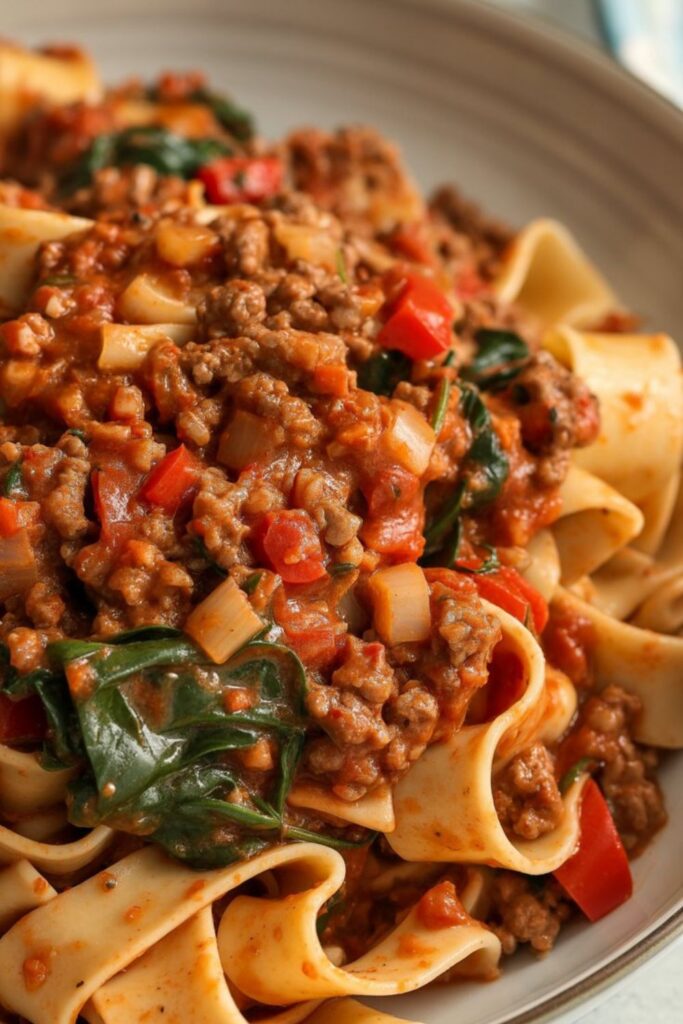
Italian Noodles Seafood Variations for Special Occasions
Master basic technique, then explore endless variations successfully. Add fresh seafood during final minutes, shrimp, scallops, fish chunks work beautifully with Italian noodles.
For heartier Italian noodles, brown Italian sausage before starting sauce. Rendered fat adds incredible depth while maintaining authentic flavors throughout the dish.
Seasonal Italian Noodles Adaptations Throughout the Year
Spring Italian noodles shine with fresh peas, asparagus, early herbs. Add blanched vegetables during final two cooking minutes. Fresh mint and lemon zest brighten entire dish.
Summer calls for cherry tomatoes, fresh basil, zucchini ribbons. Use vegetable peeler creating elegant strips that cook quickly. Peak season tomatoes require minimal cooking for sweetness.
Fall Italian noodles welcome roasted butternut squash, sage, walnuts. Roast squash until caramelized before adding to sauce. Crispy sage leaves provide textural contrast perfectly.
Winter Italian noodles benefit from braised short ribs, mushrooms, vegetables. Long, slow cooking develops deep flavors that transform simple noodles into warming comfort food.
Troubleshooting Common Italian Noodles Problems
Clumpy, sticky Italian noodles usually result from insufficient water. Use at least 4 quarts per pasta pound. Salt until it tastes like mild seawater. Rolling boil prevents sticking.
Bland Italian noodles typically suffer from underseasoned components throughout. Taste sauce and adjust salt levels before combining. Pasta water should contribute saltiness too for proper results.
Dry, separated Italian noodles need more pasta water binding. Add reserved cooking liquid gradually while tossing over heat. Starch creates silky coating making everything cling beautifully.
Frequently Asked Questions About Italian Noodles
Why do my Italian noodles turn out mushy?
Italian noodles texture depends on timing and tasting carefully. Check pasta 2 minutes before package suggests, then every 30 seconds. Should have slight resistance for perfect results.
Can I make Italian noodles sauce ahead?
Sauce improves after sitting overnight as flavors develop. Reheat gently and thin with pasta water if needed. Always cook fresh pasta just before serving.
What’s the best way to reheat leftover Italian noodles?
Skip microwaving Italian noodles completely. Add leftovers to skillet with wine splash over medium heat. Toss until heated through, adding olive oil if dry.
How do I know my Italian noodles have enough pasta water?
Sauce should coat Italian noodles glossily without pooling underneath. Lifted forkfuls should show light coating that clings nicely. Add gradually – can’t remove excess.
Why do restaurant Italian noodles taste better than mine?
Restaurants use more salt, fat, pasta water than home cooks. They cook at higher heat and aren’t shy with butter, cheese for exceptional Italian noodles results.
Final Thoughts
The magic of Ultimate Italian Noodles goes beyond taste, it lives in the making. It begins when you gather fresh, simple ingredients and continues as you stir, season, and savor the aroma filling your kitchen. Every step connects you to generations of Italian cooks who believed that food made with care could nourish far more than just the body.
These noodles are more than just a delicious dish, they’re a celebration of tradition, a tribute to simplicity, and a reminder that some of life’s best moments happen around the table. From busy weeknights to family gatherings, Italian Noodles turn an ordinary meal into something memorable.
When you master this recipe, you’re not just learning to cook, you’re preserving a legacy, creating comfort, and sharing joy with every bite.

Swiftly Captions by Tina Smith — Quick, flavorful food recipes made simple, bringing fresh inspiration to your kitchen every day
